Mullein (Verbascum)
An Ancient All-time Favorite
Mullein, also known as Verbascum, is a tough and drought-tolerant biennial plant, native to Europe, northern Africa, and Asia. It has been used in herbal medicine for centuries, and with good reason.
The common name, Mullein, comes from the Latin word ‘Mollis’ which means soft and refers to the texture of the leaves. Mullein is native to Europe and Asia, with the highest species diversity in the Mediterranean. Israel has close to 20 different species, most of which are rare.
Mullein has a long history of medicinal use. It was first documented and recommended in De Materia Medica - a five-volume manuscript written by Dioscorides almost 2000 years ago. Dioscorides was a Greek physician, pharmacologist, and botanist, who served in the Roman army. This five-volume manuscript later became the basis of European and Western pharmacopeia.
During the 16th century, mullein was used extensively for the treatment of tuberculosis. In the 18th century, it made its way to North America, where it was used extensively by First Nation people.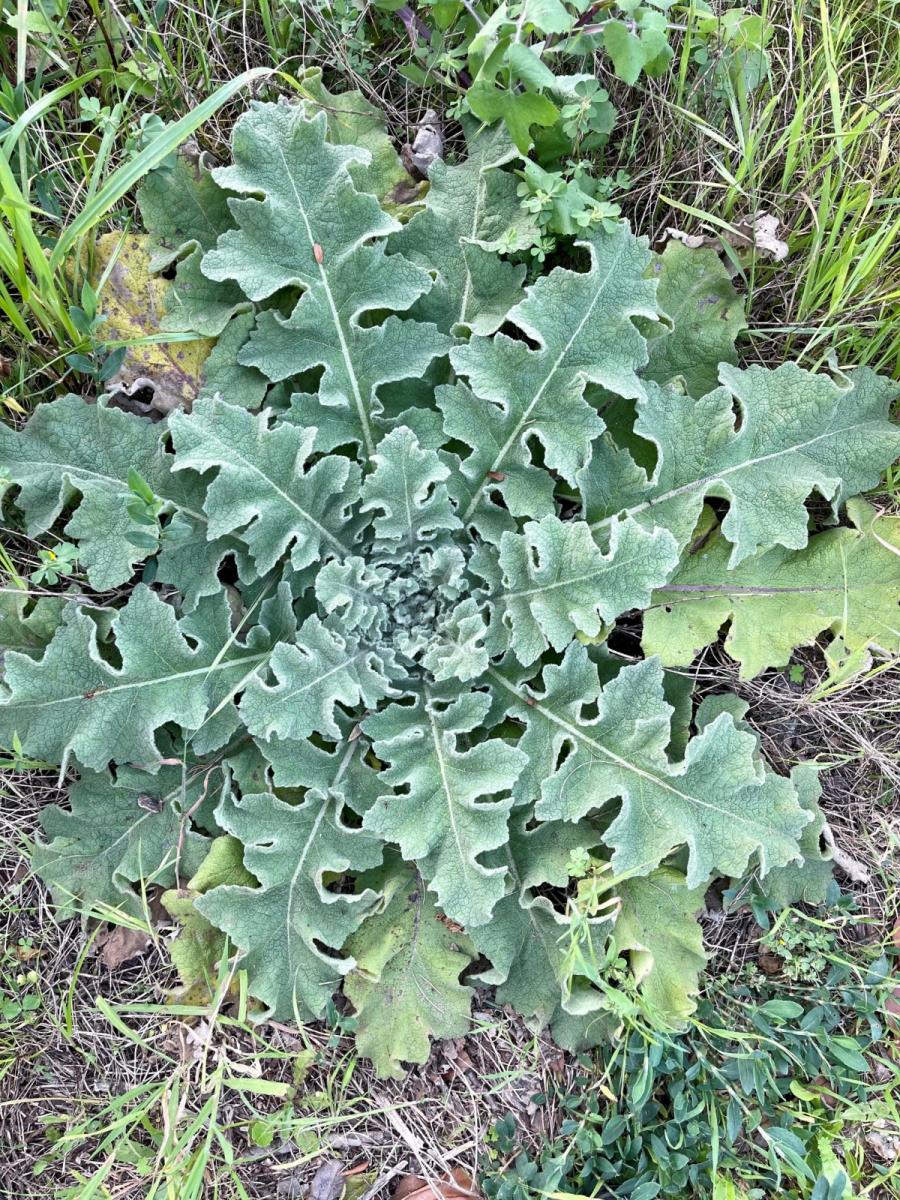
How To Grow Mullein
Mulleins are an attractive and easy-to-grow biennial, producing a large rosette of leaves in its first year, and a 2-meter impressive candelabra of yellow flowers in its second year.
Mullein grows best in full sun and in well-draining low-quality soil. After many months of continual bloom, the tall flower stalk is covered with seed capsules containing dozens of seeds. These stalks can be cut and dispersed throughout the garden, strategically placed wherever needed.
In our Bustan (organic garden), we have 3 varieties:
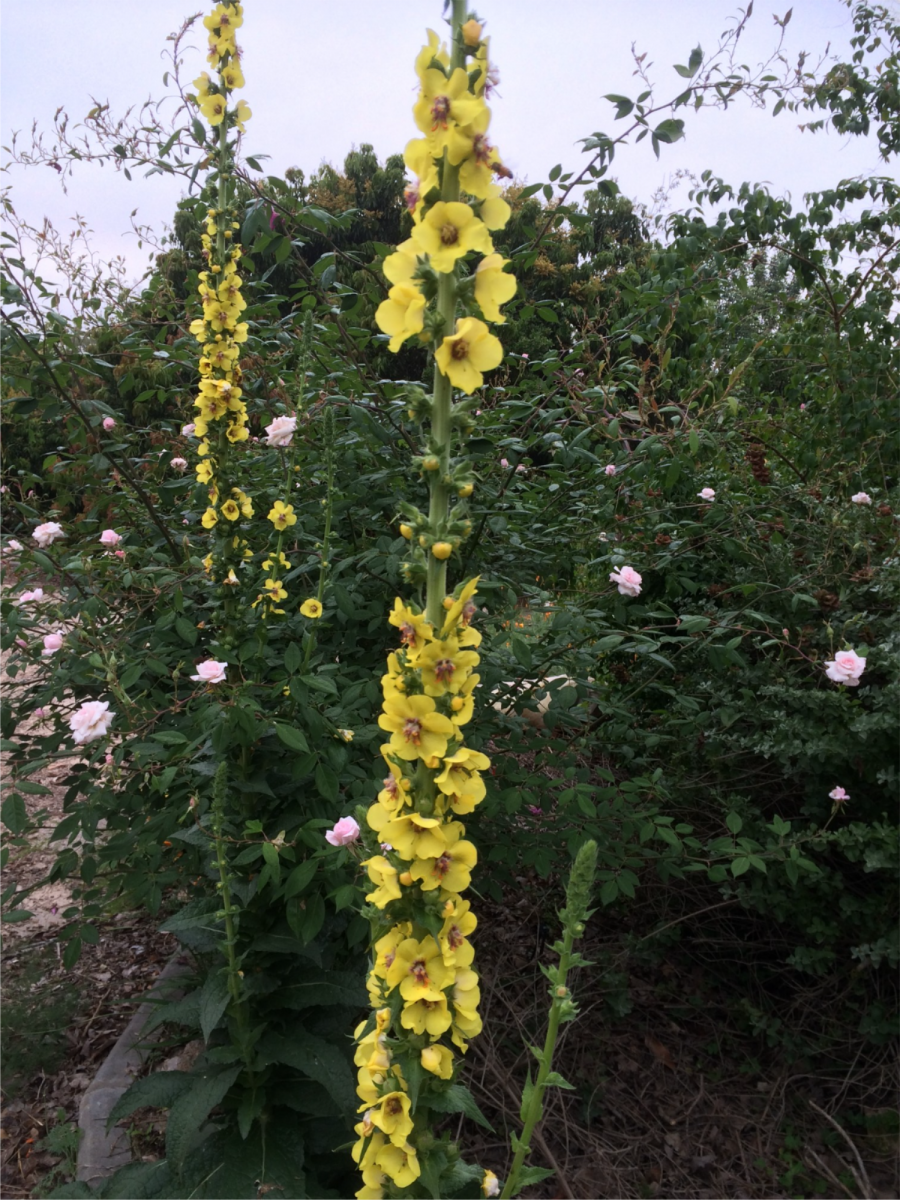 | Caesarian Mullein (Verbascum caesareum) adapts best to flowering borders thanks to its tidy appearance. |
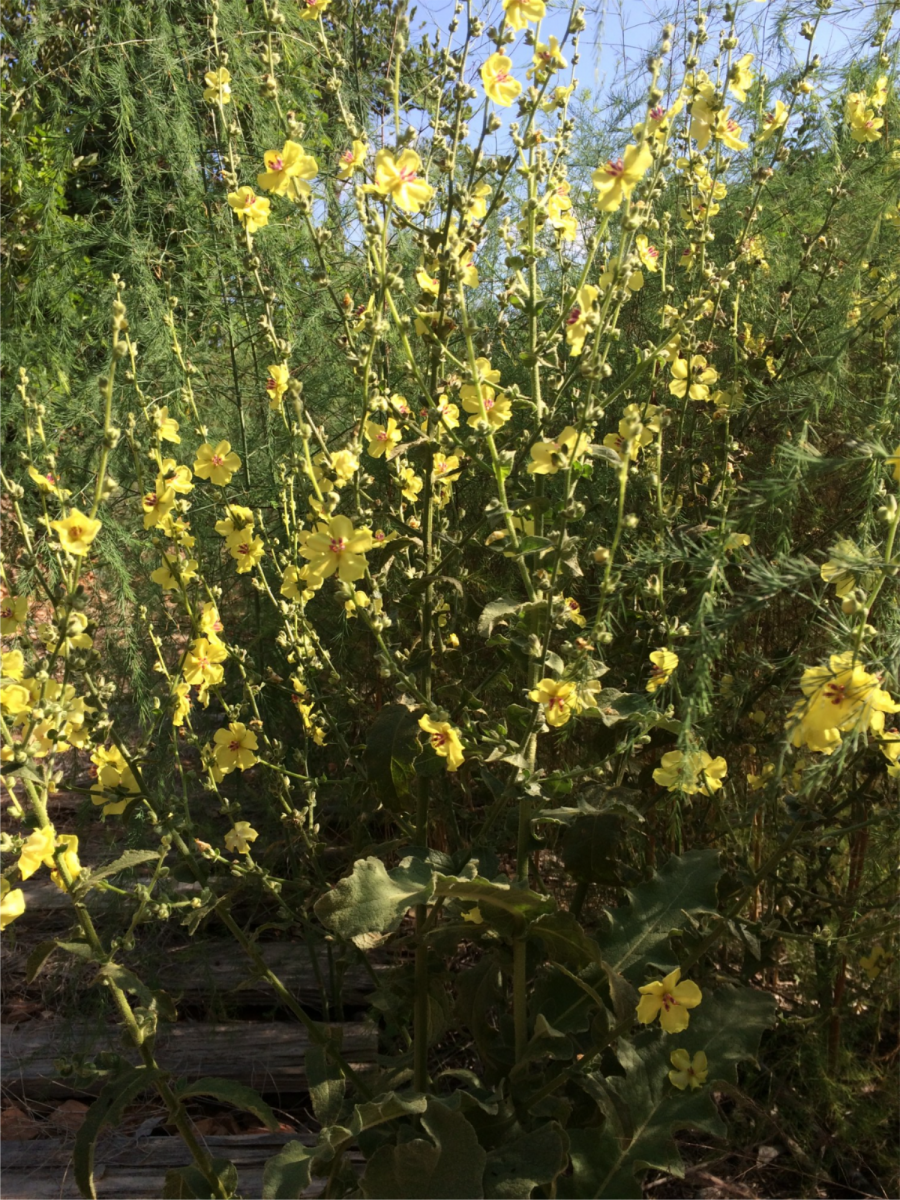 | Wavyleaf Mullein (Verbascum sinuatum), with attractive felt-like, wavy, grey leaves. This species is most commonly used for medicinal purposes here in Israel |
 | Greek Mullein (Verbascum olympicum) has a spectacular display of flowers and is best for making infused oils. |
These species take good care of themselves, while the indigenous ones (Caesarian and Wavyleaf Mullein) are particularly drought resistant. They readily re-seed themselves without becoming invasive, thus providing a superior source of nectar for bees throughout the hottest months of summer, year after year, while also ensuring a continual supply of mullein leaves year-round. Who could ask for more?
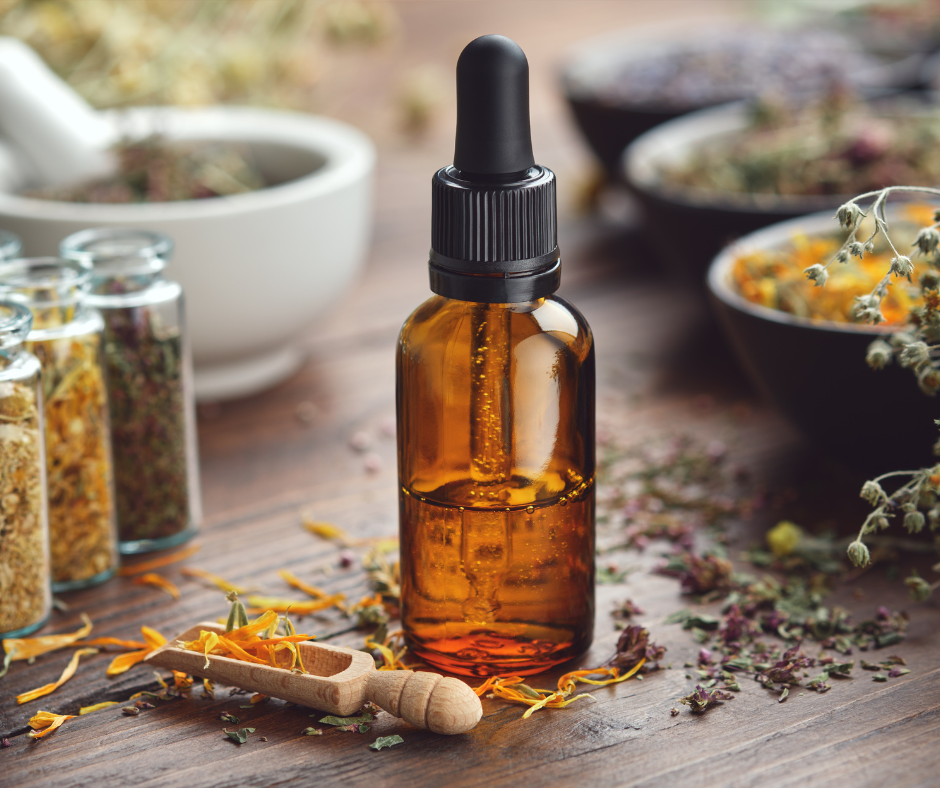
Medicinal Uses
Mullein flowers and leaves contain powerful anti-bacterial and expectorant properties that help to remove phlegm from the lungs and mucus from the body. This makes it a highly effective remedy for individuals who are suffering from bronchitis, lung congestion, colds, flu, asthma, emphysema, whooping cough, or any other respiratory ailment.
Mullein contains a compound called verbascoside which is anti-inflammatory and particularly useful in helping to ease pain associated with joint or muscle pain.
Mullein tea is excellent for aiding several digestive problems including diarrhea, constipation, indigestion, hemorrhoids, and intestinal worms.
Mullein also contains antispasmodic properties which make it helpful for reducing both menstrual and stomach cramps. Mullein helps to detox, making it highly beneficial in providing migraine relief. It also has natural sedative properties and can be used to help treat both insomnia and anxiety, while its strong antiviral abilities make it a potent remedy for the flu, shingles, herpes virus, and Epstein-Barr viruses, as well as for staph infections.
Mullein oil (mullein flowers infused in an olive oil base) is a highly effective remedy for ear infections and earaches and can be safely used with children, adults, and even dogs. For more on using mullein on dogs, go to Dogs Naturally website. Be sure to seek a qualified holistic veterinarian as well to make sure it’s right for your dog.
Mullein oil is also very helpful for skin conditions such as rashes, burns, wounds, blisters, eczema, and psoriasis.
How To Harvest And Use Mullein
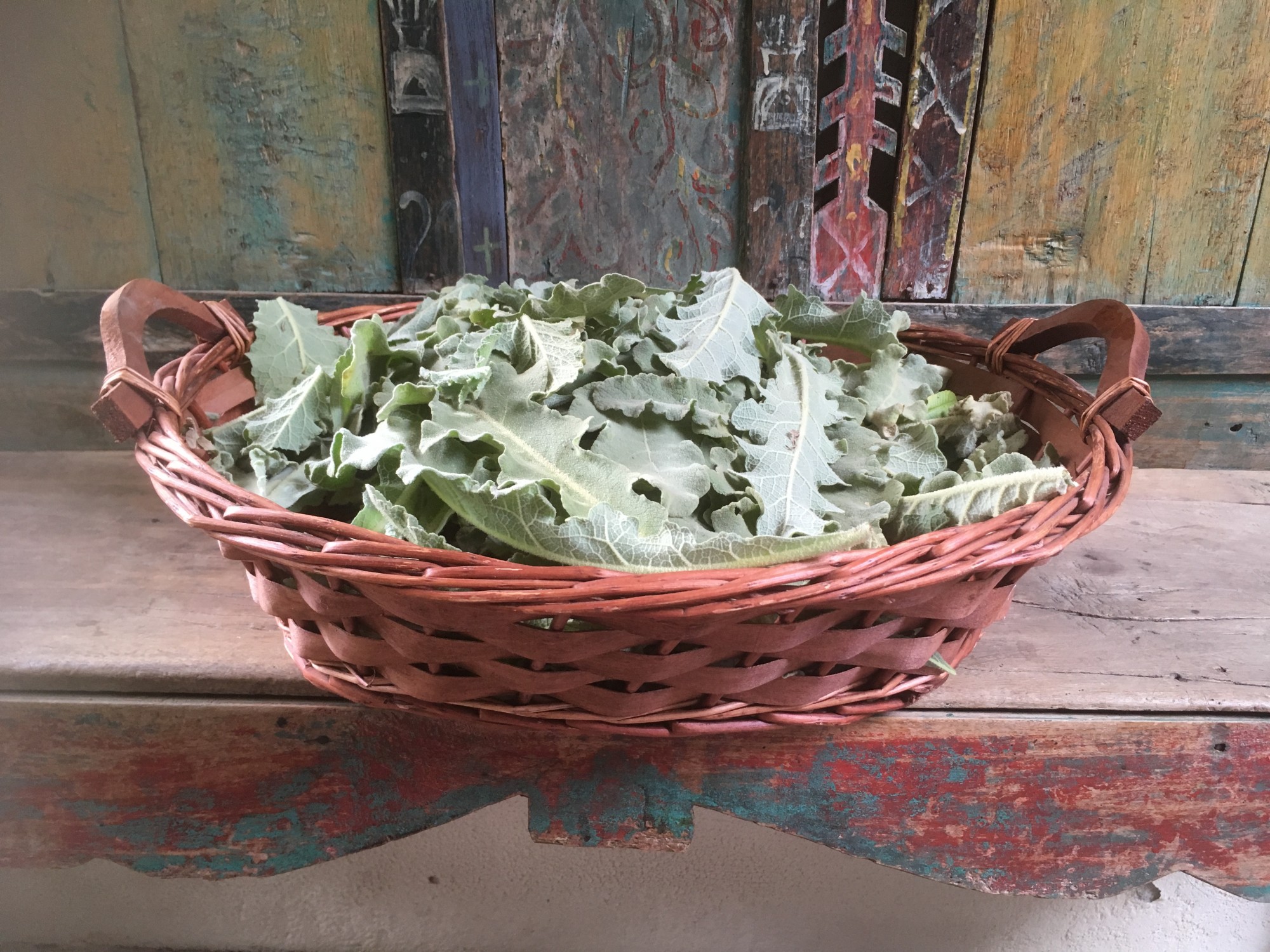
Leaves:
Mullein leaves are best used fresh or dried as a tea. It is best to pick leaves once the plant is well established, at the end of its first year of growth, or during its second year, before sending up a flower stalk. This gives the plant time to draw up an abundance of minerals from deep within the soil.
The many tiny hairs on the leaves can be irritant to some people, so it is best to handle the leaves while wearing gloves. The hairs also have a tendency to collect quite a bit of dust and dirt, so be sure to thoroughly wash them before placing them in the shade to dry.
Once dried, the leaves are ready to be cut and stored for later use.
To make mullein tea, place 1 teaspoon of fresh or dried leaves in a cup, and cover it with boiling water. Allow steeping for 10-15 minutes. Pour the tea through a fine mesh or coffee filter before drinking to avoid ingesting the fine hairs, which can be irritating.
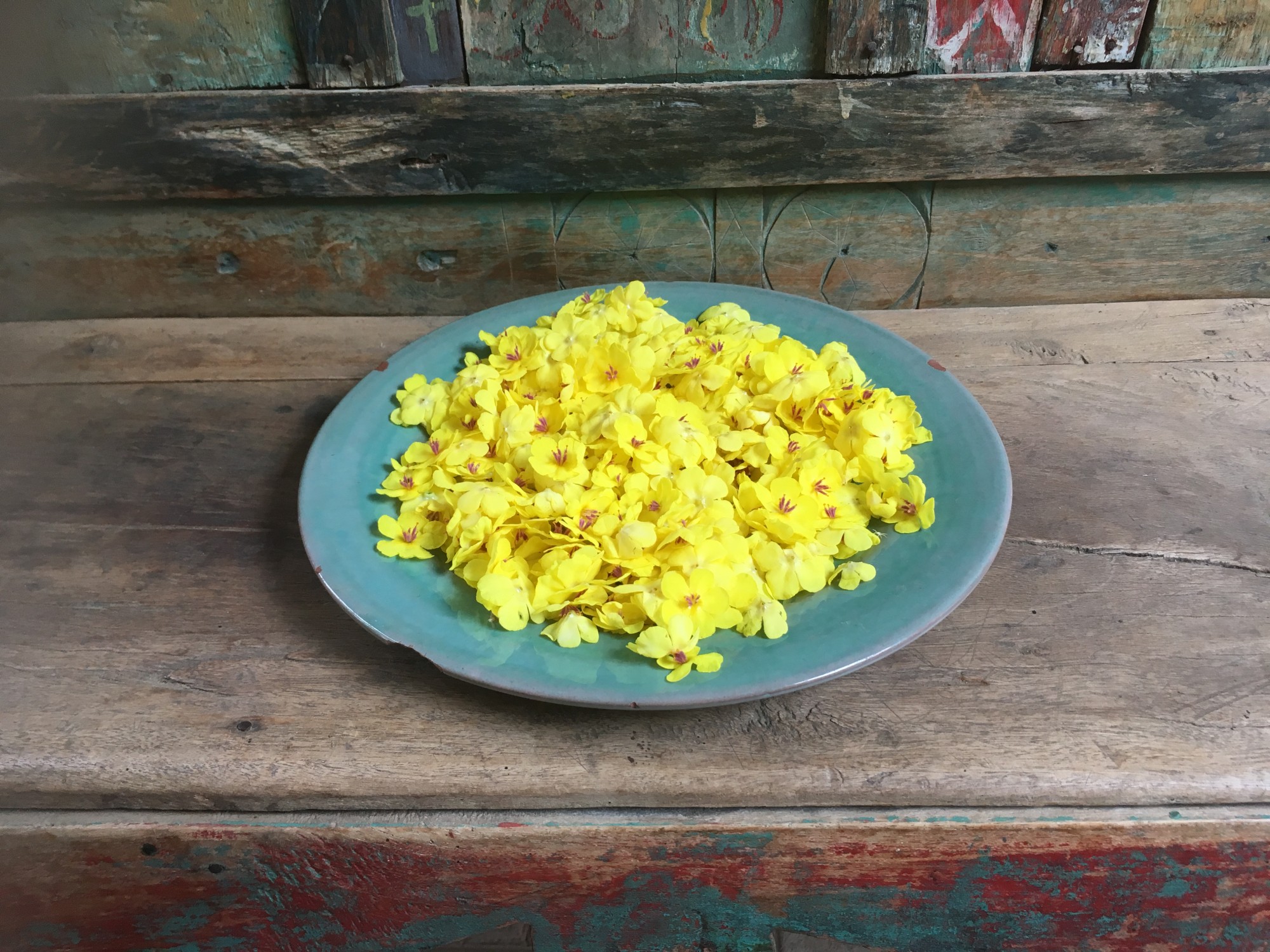
Flowers:
Mullein flowers can be added to tea or used to make mullein ear oil. They are best collected early in the morning when they first open.
For more information on how to make mullein flower oil, go to: Growing Up Herbal
This article contains information taken from The Lost Herbs and Medical Medium websites
